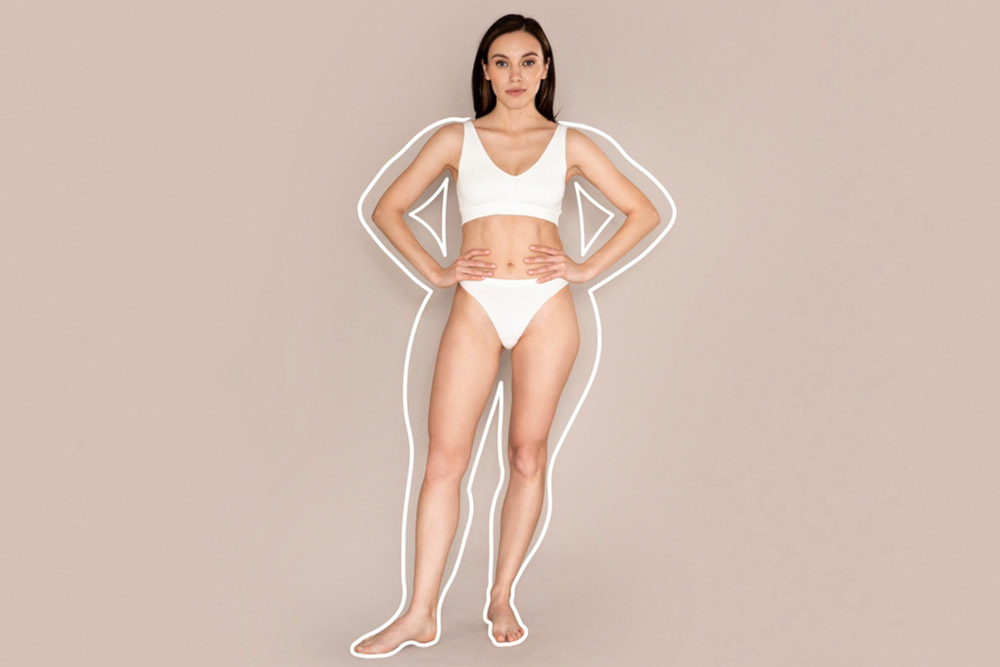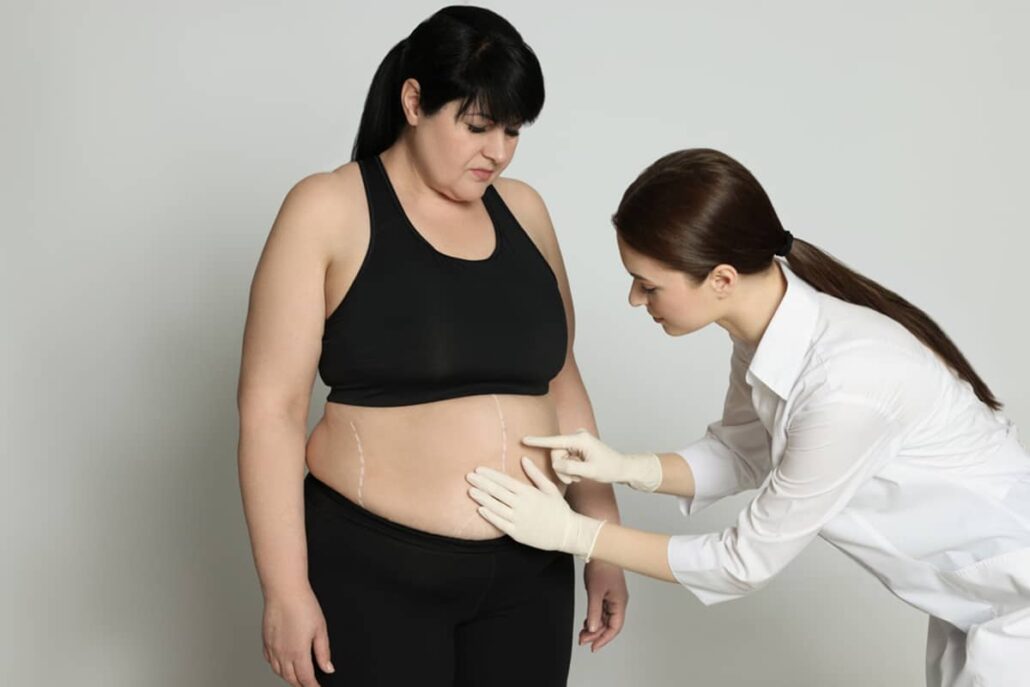
When thinking about achieving an ideal body shape, body contouring often comes to mind. However, body contouring comes with its benefits and drawbacks. What are the side effects? Is body contouring completely safe? In this article, we’ll share insights about body contouring side effects to give you a well-rounded view.
What To Consider Before Body Contouring
- Body contouring can reshape your body, but both surgical and non-surgical methods come with side effects.
- Common side effects include bruising, swelling, and temporary numbness, especially in fat reduction treatments.
- Scarring and skin laxity can occur, especially after surgical procedures like liposuction.
- There’s a rare risk of infection or blood clots, particularly in invasive procedures.
- Body contouring is generally safe when performed by a qualified surgeon with proper post-care management.
Understanding Body Contouring Procedures
Body contouring includes medical procedures that alter the shape or size of body parts. It is similar to a sculptor working on marble, but in this case, the material is your body. The aim is to help you feel better about yourself. This process may involve removing excess skin, reducing fat, or enhancing muscle tone.
Types of Body Contouring Procedures
The spectrum of body contouring is broad and can be classified into surgical and non-surgical methods.
Surgical Body Contouring
Surgical options include procedures like liposuction, tummy tucks, and arm lifts. These treatments offer dramatic results but come with longer recovery periods and some risks of complications, such as infection or blood clots.
Nonsurgical Body Contouring
Nonsurgical body contouring methods, such as cryolipolysis and radiofrequency treatments, are less invasive alternatives. They allow for minor adjustments without surgery, have quicker recovery times, and are usually well-tolerated, based on clinical studies.
Body Contouring Before and After Pictures
 Explicit content – Discretion advised.
Explicit content – Discretion advised.
 Explicit content – Discretion advised.
Explicit content – Discretion advised.
*All patients are unique and individual results may vary.
Potential Side Effects of Body Contouring
Bruising
Bruising often happens with various body contouring methods, including liposuction and non-invasive treatments like cryolipolysis. This occurs when blood vessels near the skin’s surface break during the procedure, whether you are targeting stubborn fat areas or aiming to reshape body tissue.
How to Manage:For post-surgical care or after a treatment session, cold compresses are effective in the first 48 hours. If bruising persists, consult your qualified professional or plastic surgeon for further advice.

Swelling
Swelling occurs when fluids accumulate in the tissue after invasive or non-invasive procedures. This can affect people of all skin types and conditions.
How to Manage:Elevating the treated area and wearing compression garments can expedite the healing process. Avoid strenuous activities and consult a cosmetic surgeon if the swelling persists.
Redness and Irritation
Regardless of skin condition, the skin often becomes red and may feel irritated after any form of body contouring. This can range from minimal downtime procedures to more invasive ones.
How to Manage:Return to normal activities while using gentle skincare products to soothe the skin. If redness worsens, it may be an adverse reaction requiring immediate attention from a medical professional.
Discomfort or Pain
From cosmetic surgery to less invasive procedures, some level of discomfort or mild pain is expected. Allergic reactions and reactions to anesthesia are possible but rare.
How to Manage:If you experience a reaction to anesthesia or any other adverse reactions, consult your plastic surgeon immediately.
Numbness
Especially in procedures like cryolipolysis that target fat deposits, temporary numbness in the treated area is common. This generally varies depending on your skin type.
How to Manage: Numbness usually fades as part of the healing process. A qualified professional can guide you through managing this symptom.


SPECIALIST CARE YOU CAN TRUST
Dr. Salloum is supported by a brilliant team of caring staff members.
You can trust the entire staff to help make your visit as comfortable and safe as possible!
Scarring
Cosmetic surgery procedures like liposuction can result in scarring. These scars are typically small but permanent, and their appearance can differ based on skin type.
How to Manage:For ideal body results without excess skin, applying vitamin E ointment can help minimize scarring.
Skin Laxity and Excess Skin
In some cases, especially after significant fat reduction, the procedure might leave loose skin or make the skin look saggy.
How to Manage:Consult your cosmetic surgeon for skin tightening options suitable for your skin condition to achieve your ideal body.
Burns or Heat Injury
Particularly in procedures that use energy to dislodge fat deposits, there’s a risk of burns or heat-related injuries if not properly administered.
How to Manage:Ensure that your treatment session is performed by a qualified professional to minimize downtime and adverse reactions.
Infection
Infection risk is present in any procedure involving breaking the skin, especially in invasive procedures.
How to Manage:Following your qualified professional’s post-surgical care guidelines can significantly reduce this risk.
Blood Clots
This is a rare but severe complication, mainly associated with surgical body contouring procedures like cosmetic surgery.
How to Manage:Your plastic surgeon may recommend specific medications or compression devices to minimize this risk during the healing process. Regular movement can also be beneficial.
Each of these side effects varies in severity and likelihood, depending on the specific procedure you opt for and your own health status. It’s crucial to consult with medical professionals like Dr. Gabriel Salloum to fully understand the risks and side effects associated with the body contouring treatment you’re considering.
Is Body Contouring Considered Safe?
Body contouring is usually safe if done by a qualified and experienced professional. It’s essential to research the procedure and consult with your doctor to understand the risks and potential side effects of the recommended body contouring treatment.
In 2016, the American Society for Aesthetic Plastic Surgery recorded 169,695 procedures, which had temporary side effects such as redness, swelling, and pain. Typically, only mild, short-term common side effects were reported. These included redness, swelling, and pain.
With proper care, most people experience positive results from body contouring and can achieve their desired look without significant downtime or complications.

Why Choose Dr. Gabriel Salloum?
Choosing the right specialist is crucial for a successful body contouring experience. Dr. Gabriel Salloum is a renowned expert in the field and guarantees a treatment tailored to your needs. With cutting-edge medical devices, you can rest assured you’re in good hands.
It’s crucial to remember that the treatment you opt for should align with your medical history, goals, and lifestyle. Don’t hesitate to consult Dr. Gabriel Salloum for an informed and tailored experience. Make the best choice for your body today!